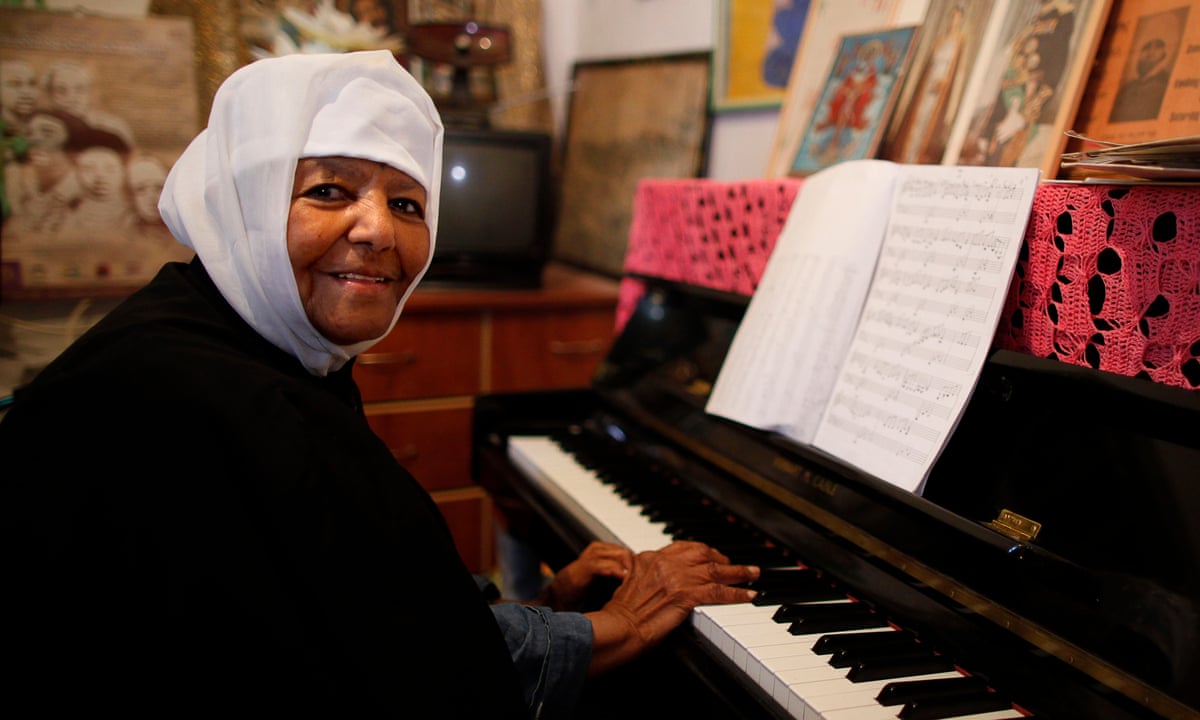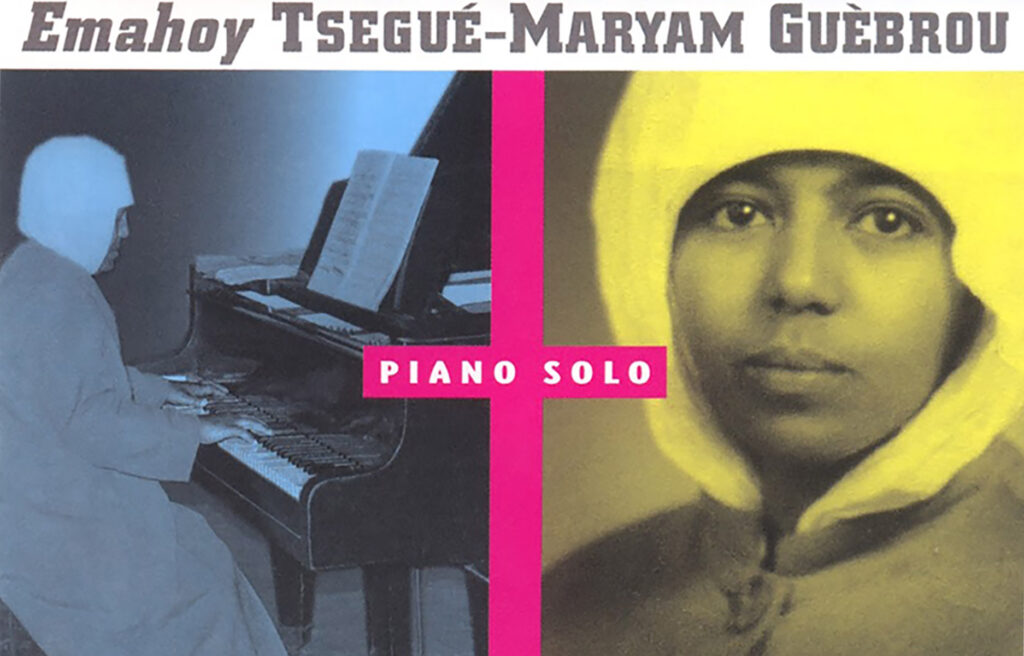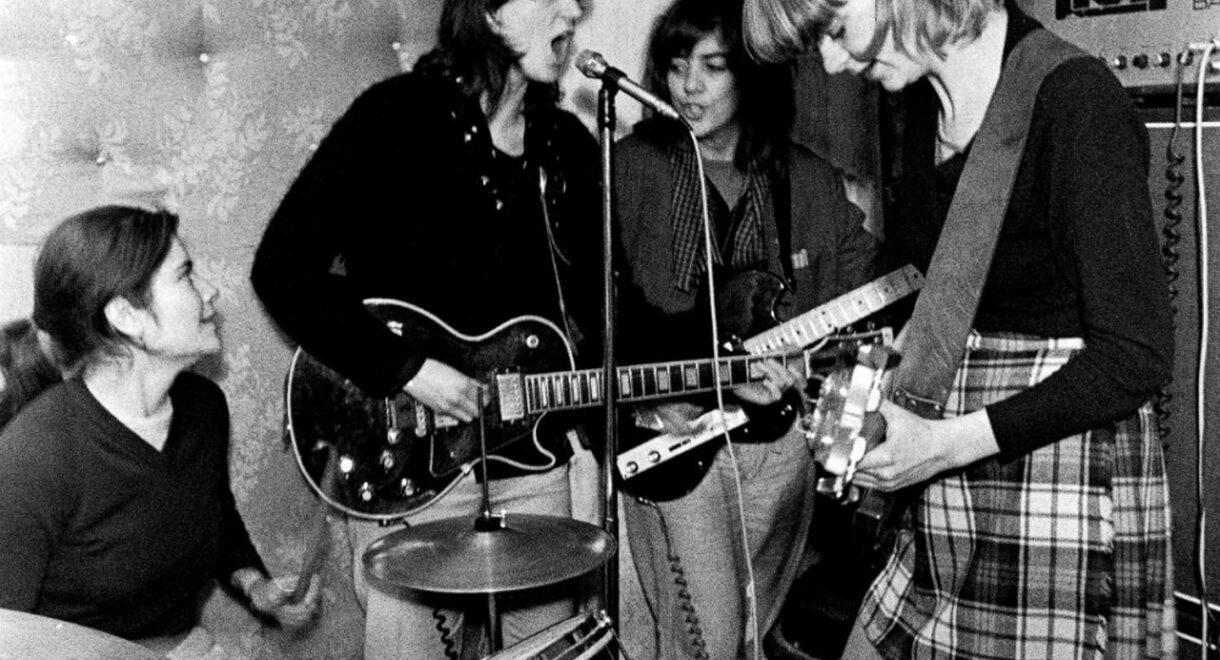Explore our newly designed and expanded webstore developed in collaboration with bean.la. Free shipping this week on orders over $100! Hey friends! It’s been a little while since […]
Remembering Ethiopian jazz pianist Emahoy Tsegue-Maryam Guèbrou

The beloved Ethiopian jazz pianist was 99 years old when she passed earlier this week…
You likely know by now that Emahoy Tsegue-Maryam Guèbrou, the piano-playing, Jerusalem-based Ethiopian nun-composer who bowled over the entire world with her sublime turns of melodic phrases, has passed.
The musician, who was 99, died at the Ethiopian Monastery she called home for almost 40 years. A few reactions and appreciations have started trickling in since news of her passing broke late Sunday, though as of yet many of the major publications have yet to publish appreciations.
The Guardian quoted Kate Molleson, the director of “The Honky Tonk Nun,” a BBC audio documentary about Guèbrou, as “a woman whose choices were determined by religious self-exile, maverick gender struggles and Ethiopia’s dramatic 20th-century political history – and who became a singular artist in the process.”

Pitchfork wrote a cursory news post about Guèbrou’s death, but it lacked much heft. What didn’t lack heft was writer and record man David Katznelson’s Substack post. He recalled a pilgrimage he’d made to visit her in Jerusalem, only to come up short when she wasn’t home. He describes the way Guèbrou’s music spread, and the seed that generated that early attention.
“She had made a home in the old city of Jerusalem for over thirty years, focusing on her religious practice, barely playing, living in self-decided obscurity. Yet she lived to see her music reach new audiences, ever since the Ethipiques release in 2006. Since then, her name spread amongst music enthusiasts, record collectors, musicologists and when she turned 90, a group of fans produced a show to celebrate her, her life and her music…a show she was able to attend. The great Mississippi Records label released her first record on vinyl a few years back, are readying a release of new recordings next month.“
He concluded with a lovely description of her work:
“I cannot recommend Guèbrou’s music enough. It is wandering, like it says in the title of her song, it is sentimental, drawing out memories with the musical paths it takes, it is an aural quiet stream antidote to the chaos and craziness of our world…and I write these words as it is storming crazily outside.“
Though we’re a little biased, In Sheep’s Clothing published one of the best overviews of the pianist’s life and music a few years ago. Written by Andy Beta, it captures the depth of Guèbrou’s skills and muse.
“Despite the demands of her devout new lifestyle, Guèbrou dedicated even more time to her music, practicing up to 9 hours a day. By the early 60’s, she had moved from the Guishen Maryam monastery to Gondar in the west. There she studied the music of St. Yared, the 6th century saint of the Ethiopian-Eritrean Orthodox Church and composer of the liturgical music of the church whose Mahlet remains studied and is still performed today. Struck by the group of young, homeless students studying the liturgy at the church, Guèbrou remembers on her website: ‘Although I did not have money to give them, I was determined to use my music to help these and other young people to get an education.‘
With assistance from her old friend Emperor Selaissie, she recorded five of her own compositions and released them in 1967 on a German label. Her sister assisted on another recording in the early ‘70s, this one directing all proceeds to helping an orphanage for children of soldiers. The Emahoy Music Foundation to this day remains dedicated to providing music scholarships to children in Ethiopia and Israel. Emahoy Tsegué-Maryam Guèbrou still lives in a cramped room at the Ethiopian Orthodox church in Jerusalem, playing for hours a day on a piano tucked into her room. There are portraits of Emperor Haile Selassie and her own paintings of religious icons on the walls. She composes music and there may be a future date when these other works can be heard outside of her monastery.“
https://emahoymusicfoundation.org











